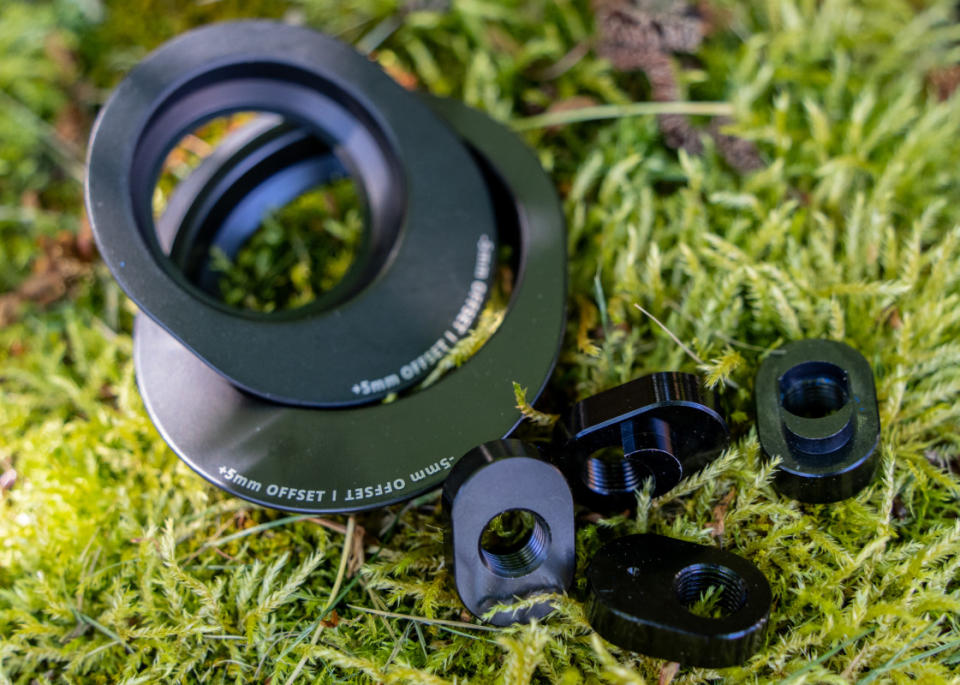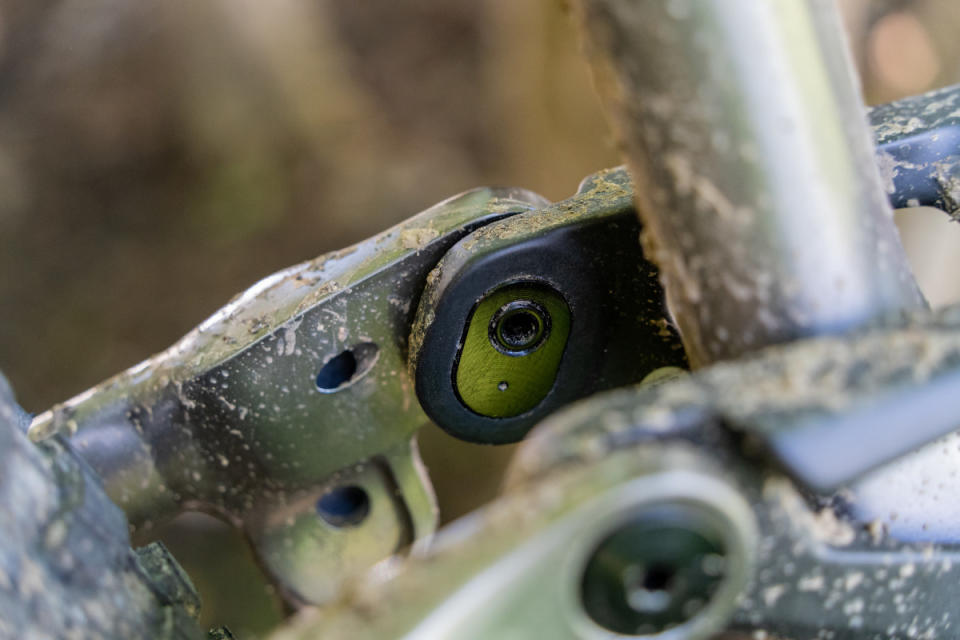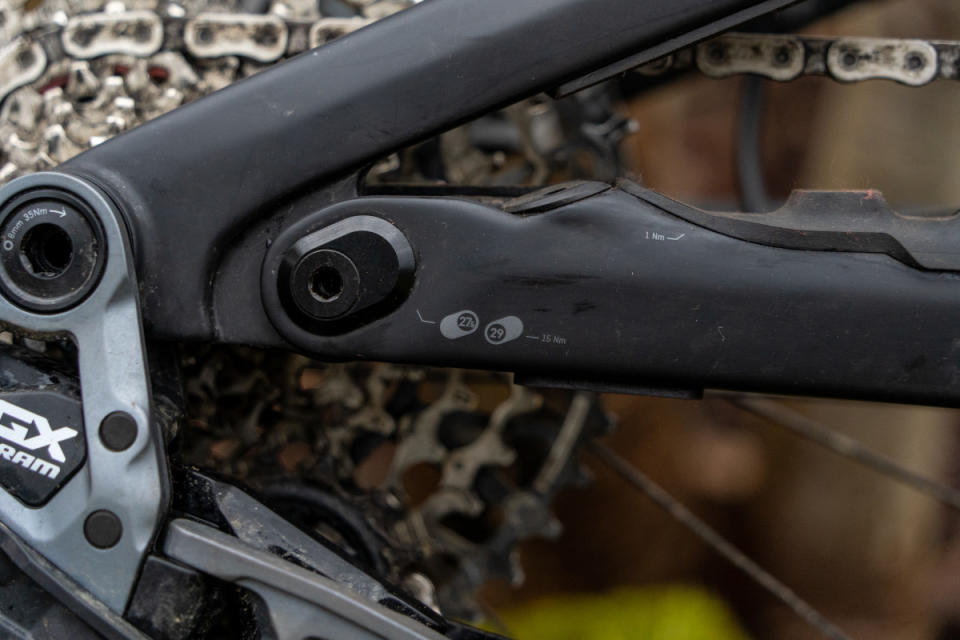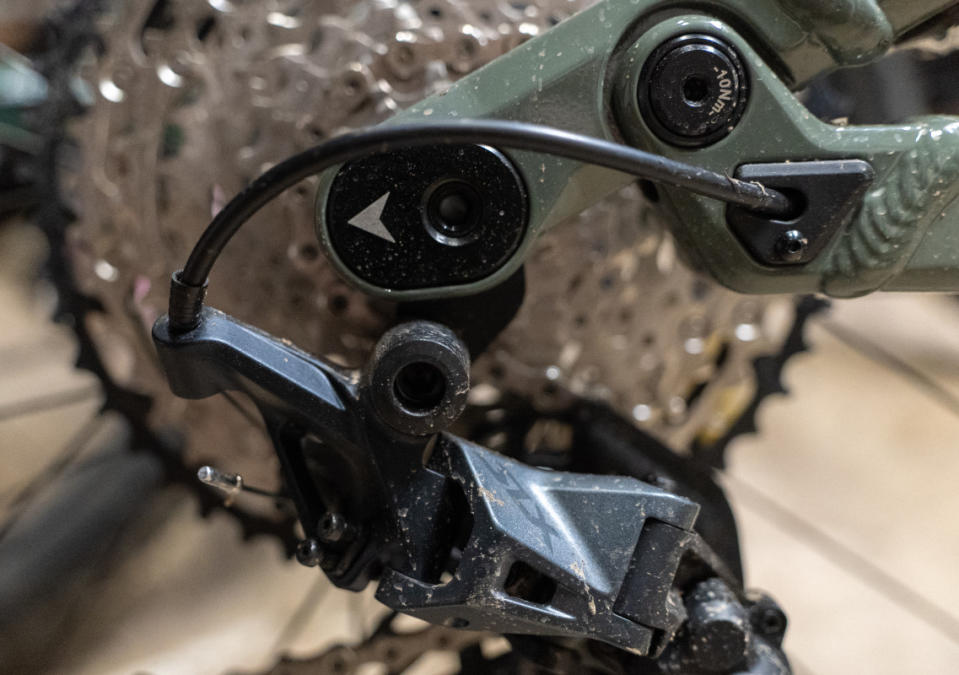Please Pass the Chips?
There’s a puff of orange Cheeto dust mixed into the grease on the flip chip that I’m sliding into the rear end of this review bike. That’s what happens when I try to combine a pre-ride snack and quick geo-adjust. It takes me about three minutes to swap my flip chips, another three to finish off that bag of Cheetos, and I’m out the door on a bike that feels notably more aggressive and composed in chunder than it did six minutes ago.
If the bikes sitting in my garage right now are any indication, we’re entering a golden age of geometry and suspension adjustability, and I’m here for it.
We’ve had geometry adjust options on many frames for ages, but for too long those choices were bland and uninspiring. You could take half an hour, swear at some unreachable bolt, and cross thread something important, all on a quest to add or subtract a quarter of a degree from your headtube angle. We’ve had options, sure, but it’s felt a little like choosing between the white and yellow bags of Santitas corn chips. They’re just not that different.

Photo: Cy Whitling
Or you could whip out a pad of graph paper and a slide rule and try to calculate which of nine very similar options made the most sense for the day. Sure, some brands were cheeky about it – Evil made a point to let you choose between low and lower, no high guys there! And occasionally a bike would make it to the market with more substantive geometry adjustments built in. But now, finally, meaningful adjustment chips are mainstream!
You get chips, I get chips, we all get chips?
Look at the big three. The default trail bikes from Trek, Specialized, and Giant all have swappable headsets that allow riders to adjust either reach or headtube angle, along with flip chips elsewhere in the frame to tweak wheel size, bottom bracket height, and more. And none of those flip chips are performative. They all actually make real changes to how the bike fits and handles. We’re not talking a third of a degree and a subtle shift in suspension progression. We’re talking 10 mm of reach or two degrees of head tube angle.

With their Ride-9 system, Rocky Mountain has long been on the pointy end of “lots of options, with barely discernible differences between them.” But the new Altitude delivers four usable flip chip positions, along with another chip to adjust for rear wheel size, and swappable headset cups for reach. That’s a strong showing that gives riders an impressive amount of freedom to mold the Altitude to their vision.
Are you sure? Guacamole costs extra!
Yep, flip chips always change more than is advertised on the box. Seat tubes slacken along with head tubes, chainstay lengths affect suspension travel, and reach adjustments change stack along the way. No single change to a bike happens in a vacuum. But, anecdotally at least, most brands have figured out how to make bikes that work really well regardless of what setting they’re in. None of the flip-chip-heavy bikes I’ve ridden have had any settings that felt taboo, no forbidden combinations. Instead, all of those changes working in tandem make for bikes that are better suited to specific trails or riders. It’s a lot easier to make a bike ride poorly through bad suspension or tire setup than it is by playing fast and loose with your flip chips, so there’s little downside to including them.

Sure, flip chips add weight and complexity to a frame. They’re another potential home for creaks, and extra hardware rarely makes bikes lighter. But when Giant can sell me a Trance X that costs $3700, has a sensible build, a reasonable weight, and a fleet of adjustments that make legitimately noticeable changes to how the bike rides, sign me up! I’ll have a full review of that bike up soon, but for now, I’m pretty enamored with how versatile of a platform it is, and a lot of that versatility comes courtesy of its chips.
What if you don’t like chips?
There’s a part of me that dreams of a utopian world where every new mountain bike has an adjustable reach headset built in, a flip chip for 29 or 27.5” rear wheels, and maybe another link to adjust the head tube, seat tube, and BB height. That’s the part of me that loves machine built flow trails and Taylor Swift.

Photo: Cy Whitling
But there’s another part of me that understands that an important part of what makes mountain biking so cool is how diverse our approaches to it are. And that diversity of preference is expressed everywhere from trail building style, to music choice, to the sort of adjustments brands offer on their bikes. That’s the part of me that enjoys janky trails that I’m bad at, cover band house shows, and rooting around in thrift stores.
Mountain biking needs mainstream normalcy and it needs folks who straddle the fine line between innovator and crank. That balance adds depth and value to this silly activity.
I am by no means arguing that bike design needs to converge at one totalitarian ideal where every brand offers the same bike, with the same adjustment options, and the same spec. But when given the choice between two otherwise similar frames, where one has adjustment chips and one forces me to run what it brung? I’m reaching for the one that I can play with every time.
So yes, bike brands, I would like a side of chips with my order!

